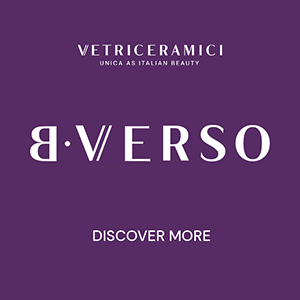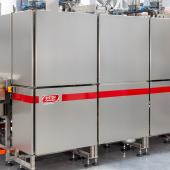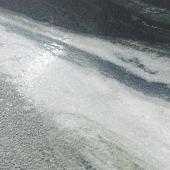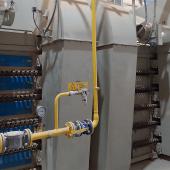DDG doubles: New opportunities for Sacmi’s “Full Digital” decoration line
The potential of the new digital modules has been expanded for the application of both dry and wet material effects. The result: even more opportunities for 3D surface structuring, with synchronized alignment and digital tracking.
Sacmi is introducing a new application of its Digital Decoration & Glazing (DDG) series for the production of digitally textured, glazed and decorated ceramic surfaces.
The key innovation in this fully digital configuration is the expanded functionality of the DDG technology, which now goes beyond the selective application of grits, glues and other dry or wet effects. By installing two DDG modules, one positioned upstream and the other downstream of the digital inkjet decorator, the system can also be used to create genuine surface structure effects.
In practical terms, the first DDG module can be used to apply grits and glues to create textures resembling wood, natural stone and other materials, while also depositing structuring inks to generate high-definition micro-textures. Performing multiple processes simultaneously within a single decoration module leads to hyper-realistic results.
In combination with the application of resist inks and other effects using the integrated Sacmi DHD inkjet modules, the slab can then be passed through the second DDG module for the application of further material effects and glaze surface finishes, such as a classic transparent topcoat.
This innovative configuration fully harnesses the potential of the exclusive DDG technology within the Sacmi Deep Digital Line, extending the concept of digital decoration and glazing into the realm of three-dimensional surface decoration. This results in a more efficient process for managing small batches, just-in-time production and frequent changes in size and texture. In addition, the process is entirely free from mechanical constraints, allowing the utmost versatility in handling complex production mixes with high aesthetic value.
Line Up and Line Manager
Alongside its evolving full digital offering, Sacmi has developed two new systems to overcome operational constraints and simplify management of this kind of line. Line Up and Line Manager are designed to handle the growing complexity of multi-printer lines by improving the synchronisation and alignment of the various graphic and material layers that make up the final product.
Line Up is a graphic alignment system supported by optical vision devices. It ensures precise registration of overlapping images printed by the different digital machines along the line. Integrated with the intelligent tracking system, Line Up allows for automatic tile/slab recognition and informs the printers of which image to use. The system transmits and receives processing data from the various machines, ensuring complete traceability by the end of the line.
Line Manager controls the various digital machines operating in sequence from a single access point. The system allows operators to manage the entire line from a central point and view the printers as though they were a single machine. The line operator receives the complete product files from the graphics department and can distribute them to the line from the central cockpit. The system then assigns the relevant files to each printer, eliminating the need to upload them individually.
From this central cockpit, the operator can also carry out all graphic and printing optimisations normally performed on individual machines. Production logs are always available and can be shared with workflow management systems.
Integration with the forming process for a unified ceramic aesthetic
By integrating additional digital devices on the line, such as powder dosing units positioned before the forming stage (e.g. DGD for traditional PH presses or V-Nature for Continua+ lines), Sacmi offers a comprehensive, versatile decoration ecosystem capable of managing all surface and through-body treatments for tiles and slabs on a single platform.
The result is a cohesive overall design with perfectly synchronised 3D effects and a distinctive aesthetic that faithfully replicates the look and feel of natural materials.
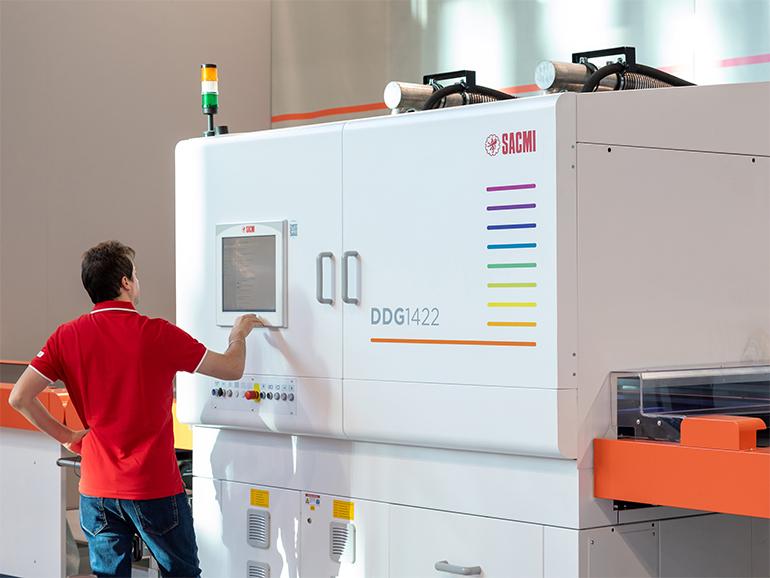
Did you find this article useful?
Join the CWW community to receive the most important news from the global ceramic industry every two weeks














